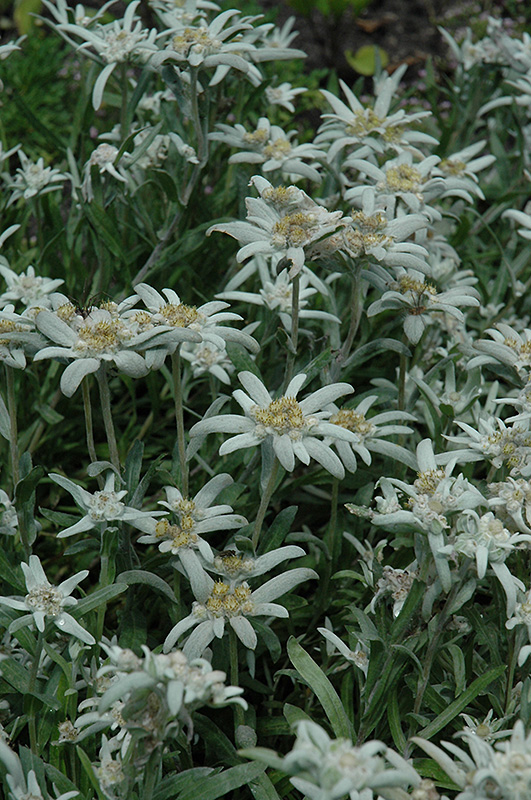Plant Height: 4 inches
Flower Height: 8 inches
Spread: 12 inches
Sunlight:
![]()
![]()
Hardiness Zone: 1b
Ornamental Features
Alpine Edelweiss's attractive tiny tomentose narrow leaves remain gray in color throughout the season on a plant with an upright spreading habit of growth. It features subtle white flowers with buttery yellow eyes and silver bracts at the ends of the stems in early summer.
Landscape Attributes
Alpine Edelweiss is an herbaceous perennial with an upright spreading habit of growth. It brings an extremely fine and delicate texture to the garden composition and should be used to full effect.
This is a relatively low maintenance plant, and should be cut back in late fall in preparation for winter. It has no significant negative characteristics.
Alpine Edelweiss is recommended for the following landscape applications;
- Rock/Alpine Gardens
Planting & Growing
Alpine Edelweiss will grow to be only 4 inches tall at maturity extending to 8 inches tall with the flowers, with a spread of 12 inches. Its foliage tends to remain low and dense right to the ground. It grows at a medium rate, and under ideal conditions can be expected to live for approximately 10 years. As an herbaceous perennial, this plant will usually die back to the crown each winter, and will regrow from the base each spring. Be careful not to disturb the crown in late winter when it may not be readily seen!
This plant does best in full sun to partial shade. It prefers dry to average moisture levels with very well-drained soil, and will often die in standing water. It is considered to be drought-tolerant, and thus makes an ideal choice for a low-water garden or xeriscape application. It is particular about its soil conditions, with a strong preference for poor, alkaline soils. It is somewhat tolerant of urban pollution. This species is not originally from North America. It can be propagated by division.
A NetPS Plant Finder tool


